
The most affordable natural plant materials for weaving are: willow, bark, reed, common cane, cattail, cereal straw, wood chips, pine roots and spruce.
The most popular and affordable for the manufacture of wicker products and furniture willow raw materials used in the form of rods with a diameter in the butt cut from 11 to 40 mm, planed tapes and plates.
Willow (Salix) is one of the widespread tree-shrub species of temperate and cold zones of the globe, only a few of its species are found in subtropical and tropical areas. According to data from paleontology, willow appeared on earth in very remote geological epochs. In various countries of Europe, Asia and America, its remains were found in the Lower Cretaceous sediments of the Mesozoic era; in the Tertiary, willow was already widespread. The study of fossil willows found in Upper Cretaceous sediments has shown that over many millennia this plant has simplified the internal organization, has acquired greater plasticity and extremely diverse external forms that determine its species diversity.
The genus Salix represents the main forms of plants: trees, shrubs and dwarf grassy shrubs. There is also a mixed form - woody shrub, when the same plant can be in the form of a tree and a bush. On the territory of the former USSR 146 willow species inhabit, of which there are 20 species of trees; mixed forms (trees and shrubs) - 23; shrubs - 77 and shrubs - 26 species.
Willow is one of the valuable tree-shrub species with versatile, universal application. It is also a medicinal plant; its bark is an excellent tanning agent, and the fiber is the raw material for the manufacture of sackcloth, rope, and mats. Willow bloom begins much earlier than other plants, so it is a valuable honey plant. It is widely used for fixing sands, cliffs and landslides. Finally, it gives a wonderful material that is valuable for weaving - a rod or, as it is also called, a rod.
A wicker suitable for weaving can be obtained only from a willow of mixed woody-shrub and shrub forms. At the same time, only a few species are suitable for basket weaving: willow, purple, three-legged, woolly sprouting, holly (red sheluga), Caspian, Ural, fine-leaved and some others.
 | 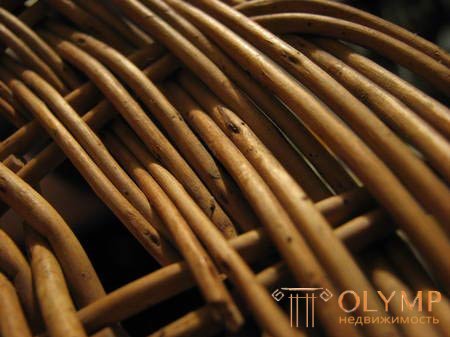 |
For the manufacture of wicker products using green and white rod. It must have certain relevant properties: straight, long, slightly conered, unbranched stem, with a butt up to 10 mm thick, easy to peel and keep good flexibility in the cleaned state; natural uniform color. In addition to the place of growth, the natural properties of the botanical species have a great influence on the quality of the rod.
Shrub willows are divided into three groups according to the thickness of the rod:
The division of willows by the size of the rod is relative, in favorable conditions (on moist fertile soils) the bars are long and thick, in unfavorable conditions (on dry sandy soils) - small and thin. Invariably thin rods give only Ural willow and wavy leaf.
The ability of willow to quickly produce a large amount of wood allows it to be widely used in pulp production, in the preparation of plastics. In the steppe areas, poor in forest, wood of willow is used for fuel, and business trees are obtained from tree willows.
Below is a description of the individual types and forms of willows, which are used for the manufacture of wicker products.
Willow hemp . Shrubs up to 8 m high, most often grows near rivers, on flood plains and in other wet places. The shoots are green with a brown or yellow tint. The leaves are oblong-lanceolate, 7–15 cm long, with short petioles and edges twisted in the lower part, dark green above and grayish-silver below. The rod is long, thick, with a blunt end, the core is quite large. An annual bar is used for weaving, on sticks - two three-year rods.
Red willow tree (reddish, willow, sandy). Shrub, rarely tree. The bark is shiny, red with a dark and brown tint. Kidneys are red, closely adjoining to stem. Leaves are shovel-lanceolate, with short petioles, small notches on the edge in the upper part of the leaf. The leaves are dark green above, bluish below, dull, with a convex median vein. The rods are long, flexible, thin, without branches, with a very small core. The bark is removed easily. Used for the manufacture of various small items: baskets, boxes, etc.
Prut-shaped willow is a tree with a height of 8-10 meters or a high branchy shrub. The branches are straight, long, thin. Young shoots are short, greyish-pubescent or almost naked, adults are bare or very short-haired. Stipules small, lanceolate or crescent-shaped, long-acuminate, usually rapidly falling, mostly shorter than the petioles. Leaves narrow or linear-lanceolate. Length 10–20 cm and width 1–2 cm. Wedge-shaped at the base, acute at the apex, with a curved edge, whole-cut or slightly wavy-notched, less often lame-like; from above dark green, almost naked or slightly pubescent to greyish-fluffy with glands at the edge, densely covered with silky hairs below. Earrings, developing before the leaves or at the same time, long, cylindrical, with no leaflets at the base or with them. It blooms from March to May. Naturally grows in the European part of our country, except for the extreme northern and southern regions, in Western Siberia, except for the Far North, in Altai. It grows along the banks of rivers along the living channel, mainly on fresh sandy or pebbled soil, in the old parts of the floodplain, along the banks of old ladies. On the marshy shores of reservoirs almost does not grow. Characteristic of the forest and forest-steppe zones. It can grow in periodically boggy areas. Light-requiring Stem cuttings root easily. It grows quickly, has a good sprouting ability. Resistant to spring frosts.
The wood is light, sometimes with a pinkish or reddish tinge, soft, light. It dries well, but is often warped, resilient, easily processed, but not resistant to wormhole and rotting. The one-year rod in terms of flexibility is the same as that of a willow tree, but in softness it is somewhat inferior to it. Bark cleansing is good. Cleavage of the rod is satisfactory. The core takes up to 1/3 the diameter of an annual rod.
Goat willow is a tree 6-10 m tall or a low shrub. The bark is smooth, greenish-gray, often cracked at the bottom of the trunk. The branches are thick, spreading, young seroposcale, later brown, gray or dark, nodular. Stipules reniform 4–7 mm long, serrate and lobed, early to fall. Petioles up to 2 cm long, strongly widened to the base. The leaves are oblong-oval, serrated, with a shiny dark green upper side and gray fluffy bottom. It blooms long before the leaves bloom. It grows very quickly, during the growing season reaches a height of up to 6 m. Mainly annual shoots are used, which are split into weaving tapes. Outside our country, it grows throughout Europe (except for the southern part of the Balkan Peninsula and the islands of Italy), in Asia Minor, Iran, Manchuria, on the Korean Peninsula, in Japan. It dwells on moist and fresh unblocked soils, on forest edges, along roads, ditches and slopes. Being relatively shade-tolerant, it grows in mixed forest stands in the form of underbrush and second tier. In the steppe zone lives in river valleys and gorges, but rarely descends to flooded areas of the floodplain.
In cultures, the hybrid of goat and willow willow is widely known - pointed willow . It is a large shrub 4–5 m high with long narrow lance leaves and strong bare shoots. Wood of excellent quality, goes to the rod, small and large hoops.
The willow is five-well (laurel, black-tipped, broom). Naturally grows in the European part of our country and in Siberia in lowland swamps. In the mountains - in the Urals, in the Far East takes the form of a shrub. Shrub or tree up to 13 m. Grows in wet meadows and peatlands. The bark is dark brown, later cracking. Shoots, buds and leaves, as it were, are covered with transparent varnish, glistening in the sun. The leaves resemble laurel leaves, oblong-oval, with notched edges, hard, with a shiny green upper side and a dull pale lower, with a convex middle vein. On the petioles, teeth of leaves and stipules there are glands. It blooms after full foliage. The bark is removed from the twigs cut during the sap flow. After hydrothermal treatment, the rods are easily split. Used for weaving furniture and small items.
Willow trekhtychinkovaya (almond list , marsh) - shrub height of 6-7 meters. The trunks grown in dense stands, straight, thin, smooth. The shoots are thin, flexible, yellowish-green. In old trunks and shoots, the bark is separated by thin plates, as if in patches (hence the local name of willows in the Volga region - patcher). The leaves are lanceolate, elliptical, pointed, with more or less parallel edges, serrate or toothed along the edge, with glands, bare, dark green above, matte, whitish or gray below. Petioles with two warty glands above the leaf plate. Stipules reniform or ovate, serrated, long not falling off. It blooms in April - May, after the blooming of the leaves. Naturally grows in the European part of our country, except the north-west, in the Caucasus, most of Siberia, the Far East. It grows in the floodplains of rivers, in the coastal strip, on islands and young sediments, where it forms dense thickets with Russian willow. It prefers flat rivers, it does not go far into the mountains. It tolerates some soil salinity in semi-desert river floodplains, where, however, it does not form large thickets. The wood is white and greyish-green, light, soft, well-dried, easily processed and finished. The annual bar is flexible and soft, easily splits and planes. Bark cleansing is good. A two to four year old rod is used on a furniture stick.
The Russian willow is a tree 6–10 m high or a shrub up to 6 m high. The branches are long, young - pubescent, after a year - greenish-gray, naked. Leaves - from narrow-lanceolate to lanceolate. Russian willow is widespread in the European part of our country, in Western and Eastern Siberia, in the Far East. In western regions and in Western Europe it is replaced by a willow. It grows predominantly in the floodplains of rivers, on islands and coastal shoals and sediments, where it reaches a turbulent development and forms huge thickets. The rod is of poor quality, brittle, and therefore it is used mainly in a non-rooted form.
Willow sherstistoprebehovaya . Shrub 4–6 m high, less often a tree up to 8 m high with strong thick boughs. Young shoots are dirty, annuals - large, bare, greenish-gray. Young leaves are elliptic, white-tomentose, adults - lanceolate. It is found throughout the European part (except for the Caucasus, the Crimea, the Black Sea and the Lower Volga), in Siberia and the Far East. It lives on the banks of rivers, on the oxbows and lakes. Grows sporadically and clumps, often with Russian willow, refers to the rapidly growing species. Used on rough weaving, sticks.
Norway willow (red shade). A tree up to 10 m high or a shrub up to 6 m high. The shoots are long, thin, red-brown, from the end of the first year they are covered with a bluish wax bloom. Leaves lanceolate to linear-lanceolate, long-acuminate (6-8 times longer than the length), ferrous-serrate at the edges, shiny above, greenish below. Dissolving in March - April, long before the appearance of the leaves. Red Sheluga is distributed throughout the European part of our country, in northern and eastern regions of Central Asia in Western Siberia is extremely rare. It inhabits river valleys on the river sands, where it forms large thickets. Cold and drought resistant. One of the most common in the country. One-two-year rods are used for weaving various products, with the exception of fruit and vegetable baskets, as this willow has a bitter bark.
Willow Astrakhan and Willow Kharkiv . Artificially selected varieties of willow, characterized by a larger, but less runaway annual twig. The rod is very well cleaned of bark. More flexible than willow, and easier to crack. Both varieties are more productive than the rod-shaped ones. Can be used on the tape and furniture stick.
Willow wavy Hybrid willow trehtychinkovoy and prutovidnoy. It grows a bush, reaching 5 m in height. Annual shoots thin, flexible, red-boring color. Leaves lanceolate to linear-lanceolate, serrate on edges. The lamina is slightly wavy. Young leaves are melkoopushennye, adults - bare or slightly pubescent. It thrives very well, it is capable of giving a one-year bar up to 2.5 m long, well shading the soil, thus facilitating the fight against weeds. The one-year rod differs in small escapescence, well splits. The flexibility of the rod is the same as that of the willow tree. Bark cleansing is good. Can be used on tape and racks.
Willow primidia . Hybrid willow woolly shoots and twigs. Bush 4-6 m tall. Annual shoots are rather thick, greenish: young - with gray dense pubescence, adults - naked, with slight pubescence in the upper part. Leaves are side-toed, entire, with curled edge, dark green above, greyish pubescent below, dull. Scapes short, pubescent. Stipules are large, crescent. Well bush, can give a large annual bar. Suitable for planting on ravines and shores of ponds on chernozem and dark chestnut soils. The flexibility of a one-year rod is the same as that of a willow tree, and the splitting is similar to that of a willow. The meanness is average. It is well cleared of bark. Can be used on tape.
Willow purple . Branched shrub 1-3 m high. The bark from the inside is lemon yellow. The branches are purple or yellow, thin, flexible, bare, shiny. The kidneys are small, adherent, reddish-brown or yellowish, naked, often opposite. Leaves thin, back lanceolate, with short spines at the apex, bluish-green, entire, or serrate to the apex; young - slightly pubescent below, blacken after drying. Stems are short, naked. Stipules often do not happen. It blooms earlier or simultaneously with the appearance of leaves. It grows naturally in the Baltic States, western Ukraine, in Moldova, in the Mountainous Crimea. It grows in the valleys of rivers and streams as fresh sediment in the living channel, and in the older parts of the valley, on the marshy rays. It forms thickets in flooded areas and in floodplain areas. Light-requiring Growing fast. The wood is white, well dried, but low-resistant. The one-year rod is not very safe, it is more flexible than the willow tree of high quality. Very well cleaned of bark. Rod splitting is average. Valued by the fact that almost does not branch.
Willow Buzulukskaya . The shape of purple willow. It was derived by academician V.N. Sukachev. Gives large shrubs with linear-lanceolate leaves and a thin, long, bare-bending rod, reaching 2.5 m. It prefers loams to the soil more demanding. Very light-requiring. Little damaged by parasites. Annual bar can be used both in the bark and debarked. It has a very high flexibility and can be used for fine weaving.
Willow Ural . One of the undersized forms of purple willow. A low shrub with graceful shoots, differs from purple willow mainly in thinner shoots and smaller leaves. It grows well in moist, rich sandy soils. The performance is somewhat inferior to purple, but it is valuable in that it is suitable for fine weaving. The annual bar is somewhat longer and thinner, but more contiguous than that of the Buzuluksky willow.
Willow is heart-shaped . Naturally distributed in the south of Eastern Siberia, the Far East. It grows along the banks of small mountain rivers, without going into the mountains above 800 m above sea level. Occurs singly or in small groups. Light-requiring Annual shoots are thin, flexible, reddish-brown, naked, shiny. Buds are red-brown, with a curved tip, naked, shiny. The leaves are ovate, elliptical, shortly pointed, rounded at the base, bare, dark green above, bluish below. Scapes short, pubescent. Stipules shorter than petiole, reniform or oblong, glandular-serrate. The one-year rod is small, little-sprinting. In terms of flexibility, it is inferior only to the willow of Buzuluk It is well cleared of bark. It can be used for small weaving.
Ива каспийская . Стройный кустарник высотой до 5 м. Кору имеет бледно-серую, побеги прямые, длинные, голые, желтовато-белые, иногда покрытые восковым налетом. Листья длиной до 10 см, жесткие, линейные, кверху несколько расширенные, голые, сверху тусклые, снизу сизые, с цельными краями или в верхней части мелкопильчатые. Сережки распускаются в мае и одновременно с листьями. Ива каспийская распространена в европейской части нашей страны: на Нижней Волге, Нижнем Дону, в Заволжье (между Волгой и Уралом), на Северном Кавказе, в Закавказье, в южной части Западной и Восточной Сибири, в северных районах Средней Азии. Обитает одиночно и куртинами по берегам речек и на незадернелых бугристых песках с конденсационной влагой. Прут используют для всевозможного плетения.
Ива американская . Естественный гибрид ив пурпурной и трехтычинковой, подразделяемый на два сорта: польскую и гигантскую. Растет обычно кустом высотой до 4—5 м. Довольно требовательна к почвам. Хорошо растет только на богатых супесчаных и легких суглинистых почвах, с хорошей аэрацией. Не переносит близких грунтовых вод. Требовательна к уходу, боится сорной растительности. Однолетние побеги тонкие, ровные, красно-бурого или желтовато-зеленого цвета. Листья на длинных черешках размещены спирально, имеют ланцетную или удлиненно-ланцетную форму, голые, сверху светло-зеленые, слегка блестящие, снизу — матовые, с голубоватым оттенком. Край листа острозубчатый. Прилистники почковидные, зубчатые. Дает однолетний прут средних размеров, значительно более гибкий, чем у ивы трехтычинковой. Очень хорошо очищается от коры и раскалывается. Лучший вид из испытанных для получения среднего прута.
Рекомендуемые виды и сорта ив отвечают основным требованиям, предъявляемым к однолетнему пруту, используемому для изготовления плетеных изделий.
В лозоплетении наряду с ивовым прутом применяется много других видов растительного сырья — камыш, ситник, рогоз, солома злаковых культур, педдиг, рафия, бамбук, ротанг. Эти материалы используют в комбинации с лозой или отдельно.
 | 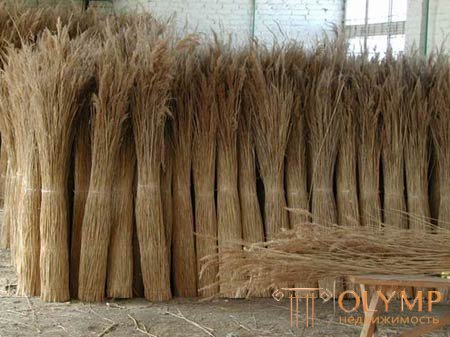 |
Имеется два вида камыша : озерный и лесной. Для изготовления плетеных изделий наибольшую ценность представляет камыш озерный. Это многолетнее растение с ползучим толстым корневищем. Стебли 100—250 см высотой, до 2,5 см в диаметре, цилиндрические, гладкие. Цветет в июне — июле. Растет камыш озерный по берегам водоемов и в воде, по травянистым болотам и болотистым лугам, встречается в европейской части (кроме Арктики), на Кавказе, в Западной и Восточной Сибири.
Reed from the northern regions are not suitable for weaving. Its stems, filled with air, have a rough surface covered with dark mounds. They are not flexible and not flexible. With a slight squeeze fingers reed breaks. The reed from the southern regions of our country is elastic, flexible, completely impermeable to water. Its trunk inside is tightly filled with pulp, which makes it elastic, not amenable to bending even under strong pressure. The surface of the stem is yellowish, completely smooth and shiny.
Из такого камыша вырабатывается педдиг-нитевидные прутки длиной по 1,5 — 2 м, шириной до 10 м, толщиной до 1 м. Такие нити очень прочны, эластичны и красивы. Они служат превосходным материалом для самого тонкого плетения: красивых корзин, спинок и сидений для мебели, обивки деталей каркасов и других изящных работ. Срезают стебли камыша в конце июня — начале июля, сушат в тени.
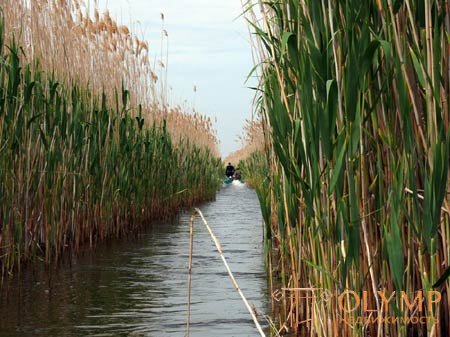 | 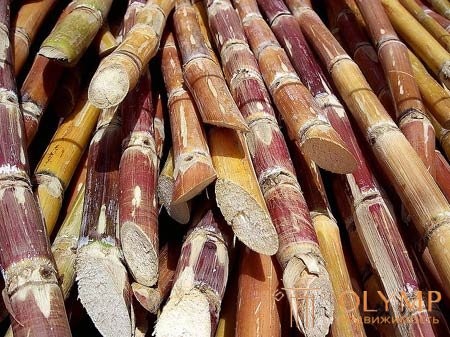 |
Тростник обыкновенный . Многолетнее травянистое растение 0,8— 4 м высотой, с длинным ползучим корневищем. Стебли прямостоячие, до 12 м толщины, голые и гладкие. Пластинки листьев линейно-ланцетные, плоские, шириной 1-5 см, обычно серовато-зеленые, жесткие, язычок из ряда волосков. Цветет в июле — сентябре. Растет тростник у берегов водоемов, на болотах и влажных лугах. Стебли тростника употребляют как строительный материал для различных построек, а также на изготовление циновок, корзин и бумаги.
Cattail broadleaf . Perennial herbaceous plant 1-2 m tall, with a thickened rhizome, covered with two-row scale-like, fast-falling leaves. The stem is thick, cylindrical, without nodes. Leaves broadly linear, concentrated at the base of the stem. It blooms in June - July. It grows along the banks of rivers, lakes, in ditches, in swamps, distributed throughout the country. For weaving use leaves. Weave baskets, mats, rugs. Leaves are harvested in summer and autumn. To preserve a uniform green color and elasticity, it is dried in the shade.
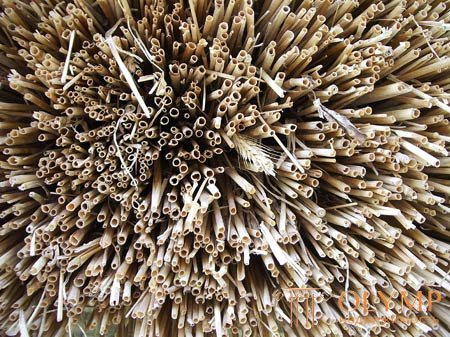 |  |
Straw of cereals (rye, barley and wheat) is widely used for the manufacture of the walls of baskets and other products. Usually, straw is taken after harvesting grain plants, but more valuable material is straw collected from dense crops during grain loading. After drying in the sun, it has great strength, a pleasant golden color and a glossy surface. Harvested straw is kept unbroken. For weaving, they use the interstices of the stem, they are pre-moistened with water and ironed with a hot iron.
Bast from linden bark in the form of ribbons of different width serves as a material for weaving and fastening parts of various woven products.
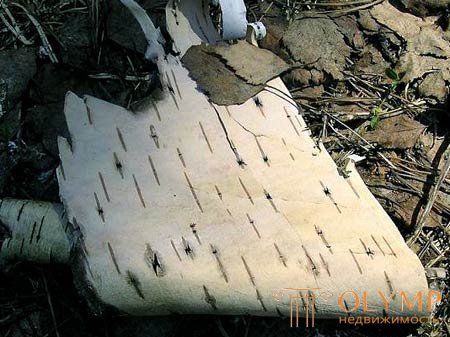 | 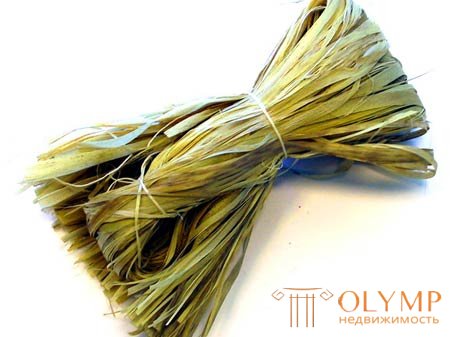 |
Natural bark is used for making woven bottoms, and cut into ribbons - for weaving. It is tar, does not get wet, does not rot for a long time, it is easy to exfoliate, has good flexibility and, after appropriate treatment, elasticity. These valuable qualities of bark cause its widespread use for the manufacture of artistic products and souvenirs.
Birch bark harvesting is the summer period of sap flow, which begins in mid-June and lasts until the second half of July. At this time, it is easily separated from the inner layer of the cortex. The best birch bark occurs in birches 30–40 years old, growing in moderately humid and shady places. In the damp, swampy areas, the bark turns out to be fragile with roughness, a lot of small and large blackened needles (dashes). On birch trees grown on forest edges, meadows and glades, open sunny places, birch bark is weak-stretch, fragile and unsuitable for weaving.
Birch bark is harvested from growing trees intended for felling or just fallen. She removed the sheets, cylinders and narrow ribbons. When preparing sheets, they make a birch bark cut across the entire smooth surface of the trunk, slightly bend the edges with a knife and remove all the bark around the trunk with their hands. The size of the sheets depends on the diameter of the birch and the smoothness of the trunk. When removed at high altitude from growing trees, an incision is made from a stepladder or from the ground with a knife impaled on a long stick; The piles are harvested from felled trees, they are used to make tuescs and other items.
The bark, removed by the leaves, is dried in the shade for 1.5-2 hours, placed in bundles and tied with twine. Keep it in piles under the yoke in a room protected from wind, sun and damp. When stored in damp, unventilated areas, the bark becomes covered with mold, then dark and whitish spots appear on it, and during long-term storage in an open place it becomes white, completely unsuitable for weaving. In a cool, shaded, dry room, bark can be stored for 5 years or more.
Before use, the outer layer and flaking pieces are removed from the bark. Depending on the destination bark is cut into blanks; for weaving it is cut into ribbons. For better flexibility and glide, the bark belts are moistened with a mixture consisting of equal parts of flaxseed (and sunflower) oil and kerosene.
Pine roots are used in weaving only from trees growing in dry sandy places. They are up to 5 m or more in length, and are located in the soil at a depth of 10-15 cm. They are harvested in July and August, during the sap flow. At this time, the root is very elastic, well separated from the bark and cut in length. In weaving use roots with a thickness of 1 m to 3 cm.
For harvesting roots use trees aged 10-30 years. Pine dug in a radius of up to 1 m, the roots of the harvested cut and pull. Often they are intertwined with the roots of the neighboring pine. If the counter root is located higher, it is cut, put a mark and continue to pull out the intended root. Harvested root is cleaned of bark. To do this, they drag it through holes of different diameters, pre-drilled on the board, after which the root is freely separated from the bark.
Peeled bark root sorted by thickness and length, placed in bunches, tied with string, stored in a cool, slightly damp place. In autumn and winter, before use, the root is pre-soaked in water at room temperature; to preserve moisture, it is wrapped in a rag. Better weave fresh root; wetted with water, it changes color and loses its elasticity.
Hazel ( Hazelnut ) is a shrub reaching 9 m in height. Stems are even, without side branches. It is used as a stick material. Details about hazel
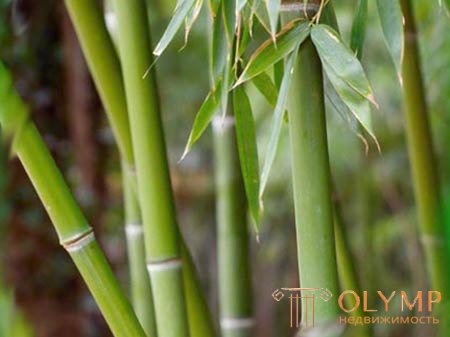 | 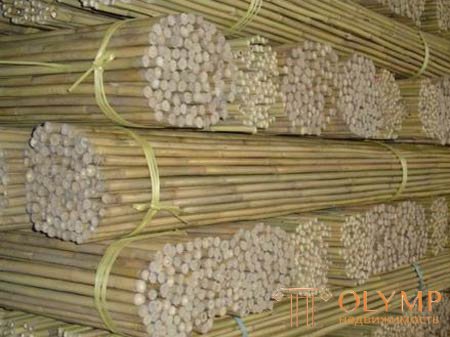 |
Bamboo Its wood is characterized by great strength and hardness. Stems straight, without lateral branches. It is used in the manufacture of furniture and other wicker products with whole stems and split into ribbons. When heated, such as an alcohol lamp, bends. In our country, bamboo grows in the Caucasus.
Lyufa is a plant cultivated in the Caucasus and Central Asia, in southern Ukraine. Herbal sponge is used in the manufacture of small art products and for the design of baskets flower pots.
Dran in the form of thin plates (3-5 millimeters thick) are made from wood of aspen, spruce and pine; used in weaving container basketware.
Plywood 3-5 m thick goes to the bottom of the baskets, shelves for shelves, table covers, seats and backs of chairs, chairs and for many other wicker products.
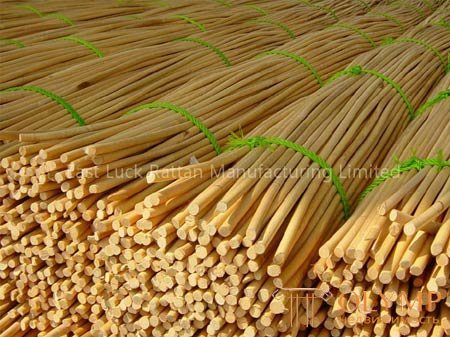 | 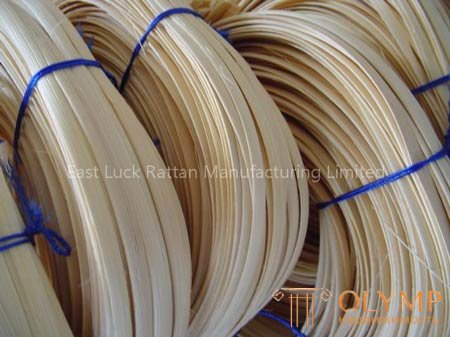 |
Rattan - palm liana, the so-called Smolyak. It grows in Asia and the Pacific Islands. It is used in the manufacture of wicker products in the form of rods and planed tapes.
Raffia - cultivated in Africa and on the island of Madagascar, has thin and delicate leaves. They have a beautiful natural color and at the same time, they lend themselves well to coloring in the most delicate colors. Finished raffia is very durable, elastic, easily split into separate tapes. Raffia weave various small items, used for braiding frames, frames.
In woven weaving for the manufacture of frames, patterns, bottoms, tabletops use sawn timber of coniferous and hardwood trees.
Что бы оставить комментарий войдите
Комментарии (0)